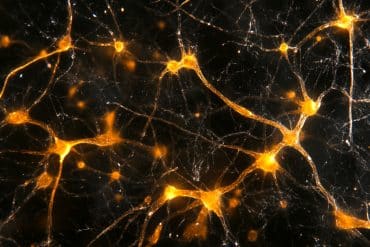Summary: Researchers unveiled an intriguing intersection between our sense of smell and color perception, revealing how particular scents can subtly distort our color experiences.
In a meticulous experiment involving six different odors and a neutrally visual task, participants’ color perception skewed in alignment with established odor-color associations, such as caramel with brown and yellow or coffee with brown and red. However, this distortion was not uniform across all scents, presenting curious exceptions and indicative of a complex interplay between our senses.
This research illuminates not only our understanding of sensory integration but also underscores how our daily perceptions are an amalgam of intertwined sensory inputs.
Key Facts:
- Odor-Color Association: Specific odors, like caramel and coffee, are subconsciously associated with certain colors, impacting our perception of color in their presence.
- Experimental Setup: Participants, isolated from other sensory distractions, were exposed to various odors and asked to adjust colors towards a neutral grey, revealing a perceptual shift influenced by the scents.
- Non-Uniform Influence: While most scents influenced color perception in expected ways, peppermint was an exception, indicating that crossmodal associations can vary widely and are not universally applicable.
Source: Frontiers
Our five senses bombard us with environmental input 24/7. One way our brain makes sense of this abundance of information is by combining information from two or more senses, such as between smells and the smoothness of textures, pitch, color, and musical dimensions.
This sensory integration also causes us to associate higher temperatures with warmer colors, lower sound pitches with less elevated positions, and colors with the flavor of particular foods – for example, the taste of oranges with the color of the same name.
Now, a study in Frontiers in Psychology has shown experimentally that such unconscious ‘crossmodal’ associations with our sense of smell can affect our perception of colors.
“Here we show that the presence of different odors influences how humans perceive color,” said lead author Dr Ryan Ward, a senior lecturer at Liverpool John Moores University in Liverpool, UK.
Sensory-deprived room
Ward and colleagues tested for the existence and strength of odor-color associations in 24 adult women and men between 20 and 57 years of age. The participants were seated in front of a screen in a room devoid of unwanted sensory stimuli for the duration of the experiments. They wore no deodorants or perfumes, and none reported being color-blind or having an impaired sense of smell.
All ambient odors in the isolation room were purged with an air purifier for four minutes. Then one of six odors (chosen at random from caramel, cherry, coffee, lemon, and peppermint, plus odorless water as a control) was broadcast into the room with an ultrasonic diffuser for five minutes.
“In a previous study, we had shown that the odor of caramel commonly constitutes a crossmodal association with dark brown and yellow, just like coffee with dark brown and red, cherry with pink, red, and purple, peppermint with green and blue, and lemon with yellow, green, and pink,” explained Ward.
Participants were presented with a screen that showed them a square filled with a random color (from an infinite range) and were invited to manually adjust two sliders – one for yellow to blue, and another for green to red – to change its color to neutral grey. After the final choice had been recorded, the procedure was repeated, until all odors had been presented five times.
Overcompensating for unconscious associations
The results showed that participants had a weak but significant tendency to adjust one or both of the sliders too far away from neutral grey. For example, when presented with the odor of coffee, they wrongly perceived ‘grey’ to be more of a red-brown color than true neutral grey. Likewise, when presented with the odor of caramel, they wrongly perceived a color enriched in blue as grey. The presence of the smell thus distorted the participants’ color perception in a predictable manner.
An exception was when the odor of peppermint was presented: here, the participants’ choice of hue was different from the typical crossmodal association demonstrated for the other odors. As expected, the participants’ selection likewise corresponded to true grey when presented with the neutral scent of water.
“These results show that the perception of grey tended towards their anticipated crossmodal correspondences for four out of five scents, namely lemon, caramel, cherry, and coffee,” said Ward.
“This ‘overcompensation’ suggests that the role of crossmodal associations in processing sensory input is strong enough to influence how we perceive information from different senses, here between odors and colors.”
Questions remain
The researchers emphasize the need to investigate how far-reaching such crossmodal associations between odors and colors are.
“We need to know the degree to which odors influence color perception. For example, is the effect shown here still present for less commonly encountered odors, or even for odors encountered for the first time?” said Ward.
About this olfaction and perception research news
Author: Mischa Dijkstra
Source: Frontiers
Contact: Mischa Dijkstra – Frontiers
Image: The image is credited to Neuroscience News
Original Research: Open access.
“Odors modulate color appearance” by Ryan J Ward et al. Frontiers in Psychology
Abstract
Odors modulate color appearance
Our brain constantly combines multisensory information from our surrounding environment.
Odors for instance are often perceived with visual cues; these sensations interact to form our own subjective experience. This integration process can have a profound impact on the resulting experience and can alter our subjective reality.
Crossmodal correspondences are the consistent associations between stimulus features in different sensory modalities. These correspondences are presumed to be bidirectional in nature and have been shown to influence our perception in a variety of different sensory modalities.
Vision is dominant in our multisensory perception and can influence how we perceive information in our other senses, including olfaction. We explored the effect that different odors have on human color perception by presenting olfactory stimuli while asking observers to adjust a color patch to be devoid of hue (neutral gray task). We found a shift in the perceived neutral gray point to be biased toward warmer colors.
Four out of five of our odors also trend toward their expected crossmodal correspondences. For instance, when asking observers to perform the neutral gray task while presenting the smell of cherry, the perceptually achromatic stimulus was biased toward a red-brown.
Using an achromatic adjustment task, we were able to demonstrate a small but systematic effect of the presence of odors on human color perception.








